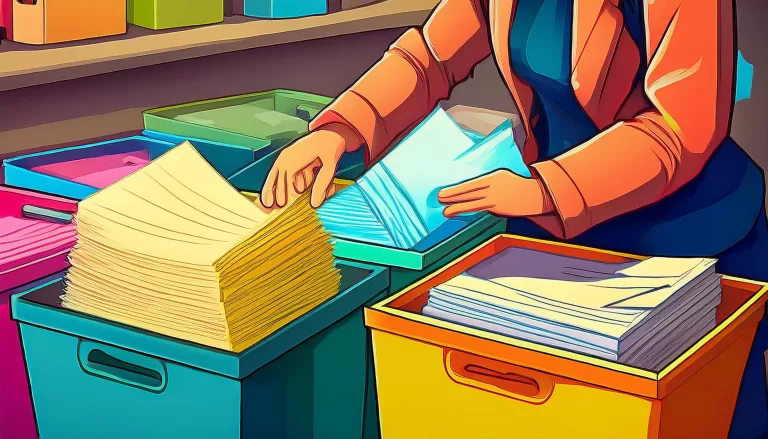Storytelling in Interviews
In this post, we go over how to leverage storytelling in interviews. If you’ve had an interview for a job before, chances are you’ve been asked many questions, some of which may be behavioral. During interviews, answering the question briefly and to the best of your ability is imperative.
Categorizing Your Experiences

When I prepare for interviews, I try to compartmentalize my previous roles into different categories. By thinking of 3-5 high-level categories, you can easily come back to them and pick the experience that fits best. In my early prep days, I wrote the categories down on a piece of paper in bright colors so they would be more prominent in my memory. Then, when recalling the details, my first thought would be the color (or category) selection, and could filter from there.
Direct Experience
First, if you have direct experience in a similar situation, use it. Paint a picture for the interviewer, with minimal “fluff”. Storytelling with a real-life example adds authenticity to your answers.
Indirect Experience
When you have indirect experience, storytelling can come in handy. It can be thought of is, “I haven’t done [x] before, but I have done [y].” This may be stressful but can be used to your advantage if you approach it similarly.
No Experience
Eventually, the interviewer may ask you a question you don’t have experience with. If this happens, don’t panic. You may pause for a moment, and mention this to your interviewer, before answering. You can also mention while you may not have that specific experience in your past, you are looking to improve your skills.
Using the S.T.A.R. Strategy
Additionally, the S.T.A.R. technique can be utilized to structure your interview answers. S.T.A.R. is an acronym for:
- Situation: think about a time in your past when you were in a similar position
- Task: explain your responsibilities
- Action: what action(s) did you take, and how you handled the situation
- Result: share the outcome
A S.T.A.R. Example
Here is an example of using the S.T.A.R. method to answer an interview question:
Prompt: tell me about a time when you resolved a conflict.
Answer: When I was working as a waitress at [employer], another waitress would frequently take tables out of turn to get more tips than me in a shift. I spoke with her directly in private to better understand the situation. I learned she was in dire straits financially, and needed extra income. We agreed to give her more tables for a couple of months while she got back on her feet. We are still friends to this day.
Even in the S.T.A.R. format, you can see how I utilized storytelling to answer the question/prompt. It can also be thought of as an “elevator pitch” – concise answers, not tomes, can get your point across clearly and quickly.
Wearing Different Hats
In many jobs, you may be asked to “wear many hats”. What does this mean? It usually means that you may perform tasks or duties that might not necessarily fall under your “hat” (your everyday tasks and responsibilities). You may be asked to “put on another hat” in these situations. When applying to roles in the future, be sure to think back to your experience, especially when you had a few styles in the hat closet.
While some may find jobs where they can play multiple positions, that’s not the case for everyone. Generally speaking, it isn’t advisable to say that you don’t want “multiple hats” in this prospective role. Instead, opt to mention your desire to specialize in one area or ask clarifying questions.


Telling Your Story
Once you’ve established a few categories to sort your experiences into, it’s time to practice! Practicing how you would respond to certain questions is the best way to prepare for your interview. After you’ve answered a few, it starts to become second nature. Without actively thinking about it, you’ll learn to filter through your categories – highlighting a time in your past when you solved a similar problem.
It’s important to remember there are many ways to answer a question, and there are no “right” answers. If it takes you a moment to think of an example, you can ask the person interviewing you if you may have a minute to think of your response. Remember: storytelling is something that you will need to practice to get the hang of.
Practice Makes (Almost) Perfect
Lastly, practice answering example interview questions. Ideally, you have someone virtually or in person who can ask them in real-time. This way, you can look the part and be fully prepared to field questions about the role you’ve applied for. However, you can ask/answer the questions solo if you don’t want to phone a friend. Ultimately, you want to practice answering questions aloud to get accustomed to the format, especially when preparing for your first interview.
Here are some example questions that you can start with:
- Can you tell me about a time when you took initiative?
- Can you explain your thought process when problem-solving with a client?
- How do you go about capturing business requirements?
- What do you do when you have multiple tasks with different levels of urgency: how do you prioritize?
- What makes you a good candidate for this role, and why did you apply?
Interview Prep Checklist
Click the icon above to download a free interview preparation checklist. Use this resource to ensure you have the bases covered beforehand, and read more examples of using storytelling in interviews.
In Conclusion
Now that you’ve learned how to categorize your experiences, have practiced answering some interview questions, and have reviewed the job description, it’s time to apply! Put your best foot forward by including your full resume and a cover letter in your application. Remember, storytelling in interviews can be a helpful tool in the toolbox when you’re looking for your next role.
Want more info on how to interview successfully? Check out more from The Success Series here.
Resources & Further Reading
- 50 interview questions about experience (with answers). Huntr. (2024, June 7). https://huntr.co/interview-questions/experience
Boogaard, K. (2024, May 14). How to use the star method to ace your next job interview. The Muse. https://www.themuse.com/advice/star-interview-method
Hunter, T. (2022, June 15). 35 behavioral interview questions and how to answer. Built In. https://builtin.com/articles/behavioral-interview-questions
Indeed Editorial Team. (2023, November 30). 6 interview questions about experience (with sample answers) | indeed.com. Indeed. https://www.indeed.com/career-advice/interviewing/experience-interview-questions
Kiptanui, L. (2019, December 12). 10 behavioral interview questions (with sample answers) | indeed.com. Indeed. https://www.indeed.com/career-advice/interviewing/behavioral-interview-questions
Kushan, D. (2021, February 9). How to categorize your interview responses. LinkedIn. https://www.linkedin.com/pulse/how-categorize-your-interview-responses-david-kushan/
Watson, H. (2022, February 23). How to choose stories for your interviews. RocketBlocks. https://www.rocketblocks.me/behavioral-interviews/story-selection.php
Recent Posts
The Success Series: How to Leverage Storytelling in Interviews
Learn how to categorize your work and personal experience so...
Read MoreGreat Tech Deals for Amazon Prime Day 2024
Great Tech Deals – Amazon Prime Day 2024 This post...
Read MoreQuick Guide to Google Search
What’s New in Google Search? If you own a business,...
Read MoreMicrosoft Edge’s New RAM Slider
What the RAM Slider Will Do Twitter (now X) user...
Read More



